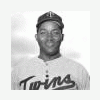
Kusick ended up facing Tanana more than any other pitcher over his career – 59 times - which was about 4% of all his plate appearances. In those at-bats, Kusick went 16 for 42 (.381) drawing a Bonds-like 16 walks for a .542 on-base percentage. He also took Tanana deep 4 times in those 42 at-bats and drove in 11 runs. Three of those home runs came in consecutive games against Tanana in 1976, after which Tanana walked Kusick 7 times in the next 5 times they met – twice intentionally.
While Kusick was certainly not a Twins great, his inextricable linking to Tanana suggests an interesting related topic. Thanks to the Batter-vs-Pitcher data on Baseball Reference we can now ask and answer who were the opposing players Twins greats faced the most and who owned whom?
* * * * * * * * *
For the first "Who Owned Whom?" we look at a recent Twins great, Joe Mauer.
Over his 15-year career, Mauer played in 1858 games and had 7960 plate appearances. He batted .306, had an on-base average of .388, slugged .439 with 143 home runs, scored 1018 runs and drove in 939. His most frequent opposing pitcher over his career was none other than Detroit’s Justin Verlander who faced off against Joe in 97 plate appearances. Verlander, who has a career .228 batting average-against and OPS-against of .652, was definitely "owned" by Mauer as Joe finished with a slash line of .317/.423/.537 on 26 for 82 hitting with 15 walks. The 26 hits are the most by Mauer against any pitcher and the first one came in his first at-bat against Verlander in the second game of a Saturday double header versus Detroit on July 23rd, 2005 as Joe hit an 0-2 pitch deep to left field in Detroit for an RBI double.
The other pitchers Joe faced frequently were Rick Porcello –who fared better than his Tigers teammate - (75 plate appearances, .243/.293/.329) and the unfortunate John Danks of the White Sox. (71 plate appearances, .381/.451/.476) Coincidentally (or not), Danks is the only pitcher to have beaned Mauer more than once. CC Sabathia is the pitcher that struck Joe out the most -17 Ks in 52 plate appearances - and, along with another lefty, Mark Buehrle, most “owned” Joe. Joe only managed .196/.269/.239 against Sabathia and .197/209/.303 against Buehrle.
Sabathia was also the first pitcher Mauer faced in the big leagues in his debut versus Cleveland in the Season Opener at the Metrodome on April 5th, 2004. Mauer, batting 8th, walked on 4 pitches against Sabathia in the 3rd and struck out swinging on a full count in the 5th. Sabathia pitched through the 7th and left with a 4-0 lead. The Twins rallied to tie the game, 4-4, in the 8th inning and Mauer's first big league hit would come on a single to center off Rafael Betancourt leading off the 9th. The game went to extra innings and Mauer got his second hit on a one-out, one-on single to right in the 11th off Chad Durbin, moving Nick Punto (running for Matt LeCroy who had walked) to third. After a Christian Guzman strikeout, Shannon Stewart lifted a Durbin fly ball deep to LF for a game-winning 3-run homer, bringing in Mauer and Punto and blowing 49,584 Metrodome fans from the exits hoarse and happy. What a memorable game to start a career!
Watch for another installment of "Who Owned Whom" coming soon.
- Read more...
- 6 comments
- 1,972 views


